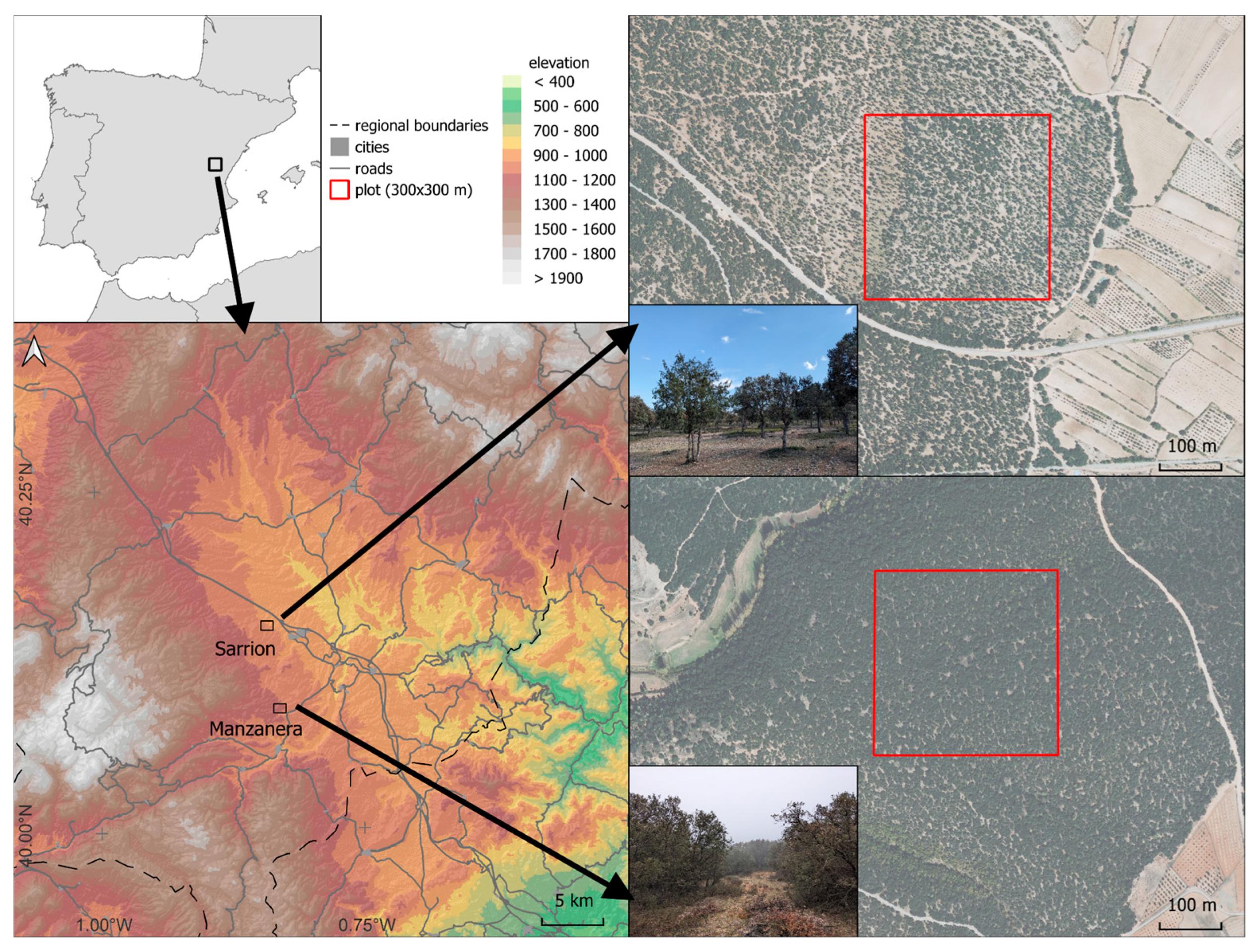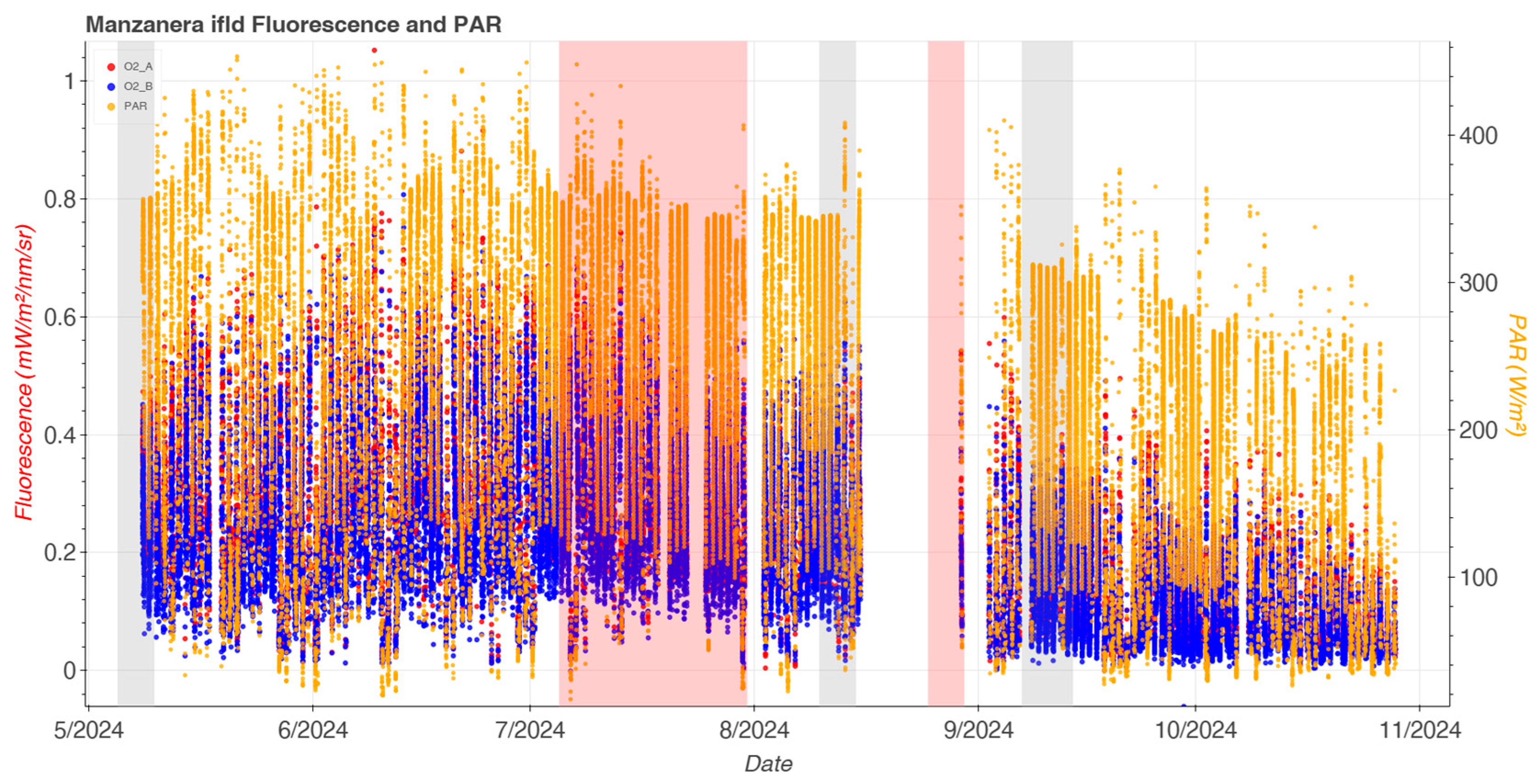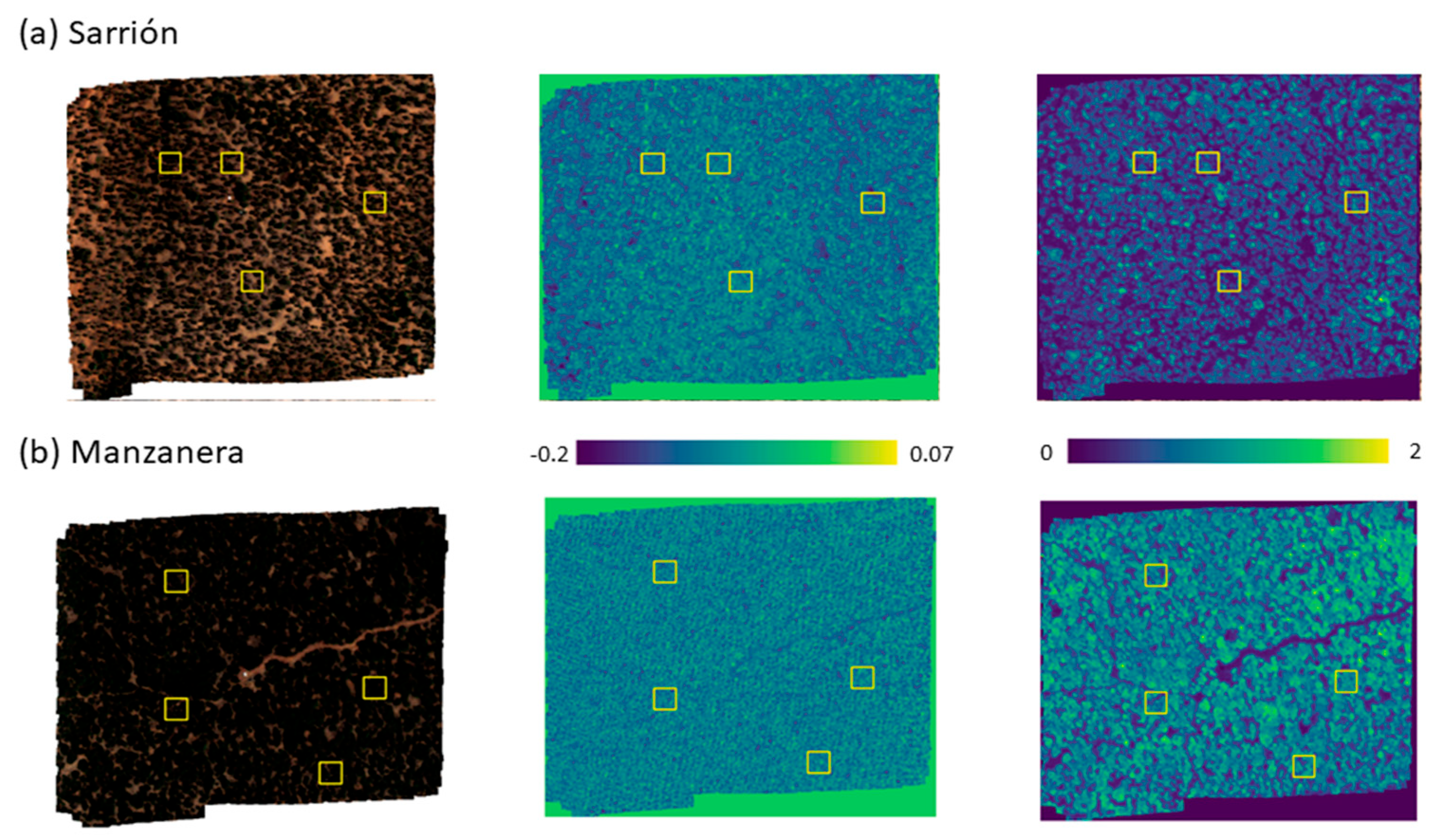SpaFLEX: Field Campaign for Calibration and Validation of FLEX-S3 Mission Products †
Abstract
1. Introduction
2. Methodology
2.1. Seasonal Campaign
2.2. Short Campaign
3. Results
3.1. Seasonal Campaign
3.2. Short Campaign
4. Conclusions and Further Research
Author Contributions
Funding
Institutional Review Board Statement
Informed Consent Statement
Data Availability Statement
Acknowledgments
Conflicts of Interest
References
- Moreno, J.F. Advances in the Retrieval and Interpretation of Solar-Induced Vegetation Chlorophyll Fluorescence Using Passive Remote Sensing Techniques. In Proceedings of the 2021 IEEE International Geoscience and Remote Sensing Symposium IGARSS, Brussels, Belgium, 11–16 July 2021; pp. 1915–1918. [Google Scholar]
- Aasen, H.; Van Wittenberghe, S.; Sabater Medina, N.; Damm, A.; Goulas, Y.; Wieneke, S.; Hueni, A.; Malenovský, Z.; Alonso, L.; Pacheco-Labrador, J.; et al. Sun-Induced Chlorophyll Fluorescence II: Review of Passive Measurement Setups, Protocols, and Their Application at the Leaf to Canopy Level. Remote Sens. 2019, 11, 927. [Google Scholar] [CrossRef]
- Pereira, G.W.; Valente, D.S.M.; Queiroz, D.M.d.; Coelho, A.L.d.F.; Costa, M.M.; Grift, T. Smart-Map: An Open-Source QGIS Plugin for Digital Mapping Using Machine Learning Techniques and Ordinary Kriging. Agronomy 2022, 12, 1350. [Google Scholar] [CrossRef]
- Peñuelas, J.; Filella, I.; Gamon, J.A. Assessment of Photosynthetic Radiation-Use Efficiency with Spectral Reflectance. New Phytol. 1995, 131, 291–296. [Google Scholar] [CrossRef]
- Wu, C.; Niu, Z.; Tang, Q.; Huang, W.; Rivard, B.; Feng, J. Remote Estimation of Gross Primary Production in Wheat Using Chlorophyll-Related Vegetation Indices. Agric. For. Meteorol. 2009, 149, 1015–1021. [Google Scholar] [CrossRef]
- Porcar-Castell, A.; Macelloni, C.; Guanter, L. Linking chlorophyll a fluorescence to photosynthesis for remote sensing applications: Mechanisms and challenges. J. Exp. Bot. 2014, 65, 4065–4076. [Google Scholar] [CrossRef] [PubMed]
- Gamon, J.A.; Peñuelas, J.; Field, C.B. A narrow-waveband reflectance index that tracks diurnal changes in photosynthetic efficiency. Remote Sens. Environ. 1992, 41, 35–44. [Google Scholar] [CrossRef]
- Cendrero-Mateo, M.P.; Carmo-Silva, A.E.; Porcar-Castell, A.; Hamerlynck, E.P.; Papuga, S.A.; Moran, M.S. Dynamic response of plant chlorophyll fluorescence to light, water and nutrient availability. Funct. Plant Biol. 2015, 42, 746–757. [Google Scholar] [CrossRef] [PubMed]
- Gómez-Giráldez, P.J.; Jiménez, M.; Cendrero-Mateo, M.P.; Van Wittenberghe, S.; Peón, J.J.; Moncholí-Estornell, A.; Díaz-Delgado, R. The Spafleximp Project: Spanish Flex-S3 Mission Calibration and Validation Plan Implementation. In Proceedings of the IGARSS 2024 IEEE International Geoscience and Remote Sensing Symposium, Athens, Greece, 7–12 July 2024; pp. 296–300. [Google Scholar]




| Location | Cab | FCV | FAPAR | |
|---|---|---|---|---|
| Sarrión | σ | 0.181 | 0.002 | 0.002 |
| Moran’s index | 0.348 | 0.368 | 0.406 | |
| Manzanera | σ | 0.120 | 0.001 | 0.001 |
| Moran’s index | 0.107 | 0.459 | 0.346 |
| Location | ESU (ID) | PRI σ | n (Reflectance) | ChlRE σ | n (Fluorescence) |
|---|---|---|---|---|---|
| Sarrión | 49 | 0.020 | 14.797 | 0.188 | 13.581 |
| 94 | 0.020 | 15.148 | 0.202 | 15.727 | |
| 115 | 0.021 | 16.602 | 0.182 | 12.719 | |
| 201 | 0.024 | 22.670 | 0.187 | 13.378 | |
| Manzanera | 51 | 0.021 | 17.341 | 0.203 | 15.861 |
| 152 | 0.019 | 14.200 | 0.198 | 15.031 | |
| 176 | 0.022 | 17.811 | 0.150 | 8.678 | |
| 45 | 0.021 | 17.287 | 0.209 | 16.847 |
Disclaimer/Publisher’s Note: The statements, opinions and data contained in all publications are solely those of the individual author(s) and contributor(s) and not of MDPI and/or the editor(s). MDPI and/or the editor(s) disclaim responsibility for any injury to people or property resulting from any ideas, methods, instructions or products referred to in the content. |
© 2025 by the authors. Licensee MDPI, Basel, Switzerland. This article is an open access article distributed under the terms and conditions of the Creative Commons Attribution (CC BY) license (https://creativecommons.org/licenses/by/4.0/).
Share and Cite
Gómez-Giráldez, P.J.; Aragonés, D.; Jiménez, M.; Cendrero-Mateo, M.P.; Van Wittenberghe, S.; Peón, J.J.; Moncholí-Estornell, A.; Díaz-Delgado, R. SpaFLEX: Field Campaign for Calibration and Validation of FLEX-S3 Mission Products. Eng. Proc. 2025, 94, 13. https://doi.org/10.3390/engproc2025094013
Gómez-Giráldez PJ, Aragonés D, Jiménez M, Cendrero-Mateo MP, Van Wittenberghe S, Peón JJ, Moncholí-Estornell A, Díaz-Delgado R. SpaFLEX: Field Campaign for Calibration and Validation of FLEX-S3 Mission Products. Engineering Proceedings. 2025; 94(1):13. https://doi.org/10.3390/engproc2025094013
Chicago/Turabian StyleGómez-Giráldez, Pedro J., David Aragonés, Marcos Jiménez, Mª Pilar Cendrero-Mateo, Shari Van Wittenberghe, Juan José Peón, Adrián Moncholí-Estornell, and Ricardo Díaz-Delgado. 2025. "SpaFLEX: Field Campaign for Calibration and Validation of FLEX-S3 Mission Products" Engineering Proceedings 94, no. 1: 13. https://doi.org/10.3390/engproc2025094013
APA StyleGómez-Giráldez, P. J., Aragonés, D., Jiménez, M., Cendrero-Mateo, M. P., Van Wittenberghe, S., Peón, J. J., Moncholí-Estornell, A., & Díaz-Delgado, R. (2025). SpaFLEX: Field Campaign for Calibration and Validation of FLEX-S3 Mission Products. Engineering Proceedings, 94(1), 13. https://doi.org/10.3390/engproc2025094013







